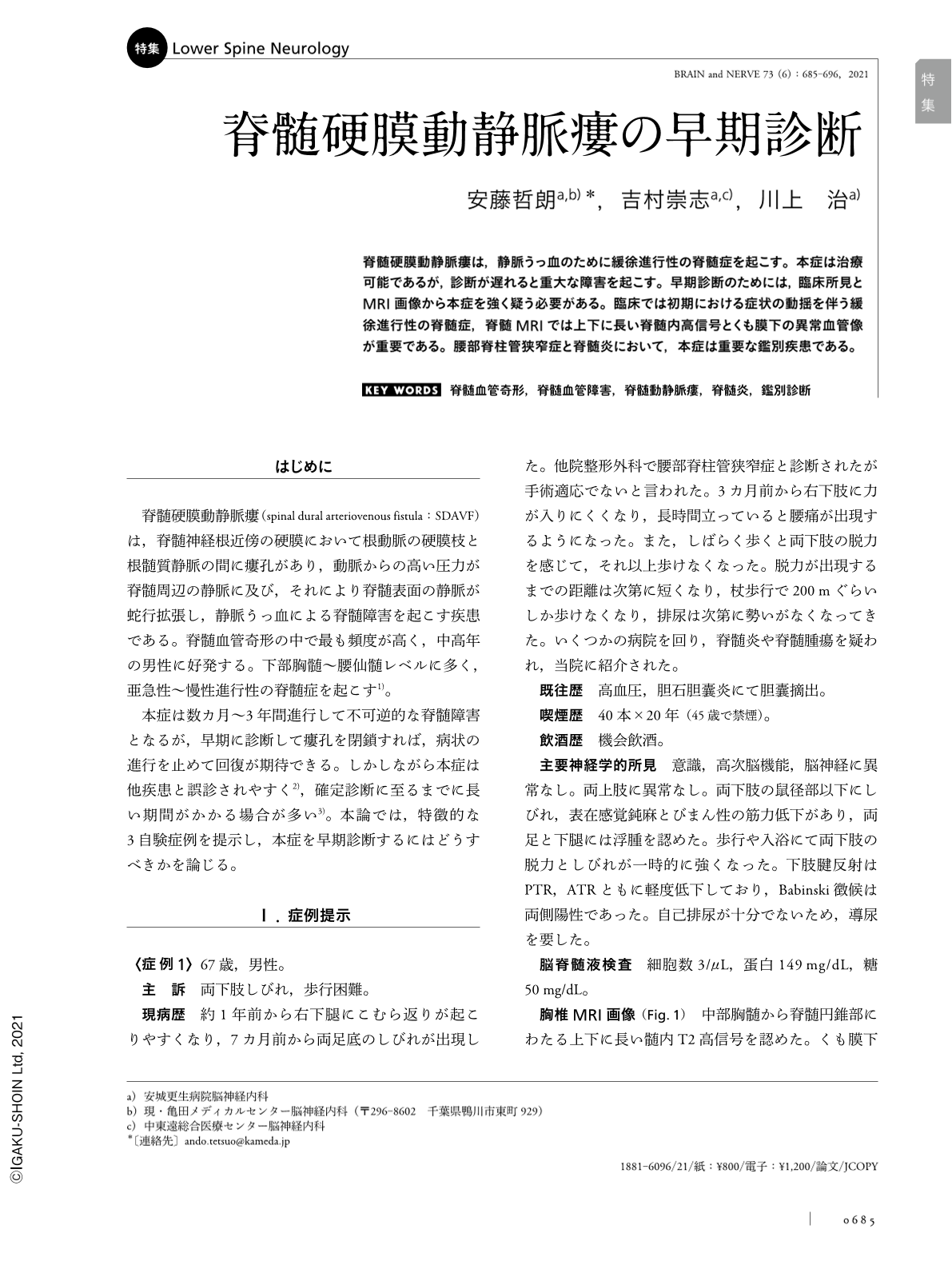Japanese
English
- 有料閲覧
- Abstract 文献概要
- 1ページ目 Look Inside
- 参考文献 Reference
脊髄硬膜動静脈瘻は,静脈うっ血のために緩徐進行性の脊髄症を起こす。本症は治療可能であるが,診断が遅れると重大な障害を起こす。早期診断のためには,臨床所見とMRI画像から本症を強く疑う必要がある。臨床では初期における症状の動揺を伴う緩徐進行性の脊髄症,脊髄MRIでは上下に長い脊髄内高信号とくも膜下の異常血管像が重要である。腰部脊柱管狭窄症と脊髄炎において,本症は重要な鑑別疾患である。
Abstract
Spinal dural arteriovenous fistulas (SDAVF) are rare and most commonly affect men aged >50 years. Patients with SDAVF develop an abnormal vascular dural shunt between the dural branch of a segmental artery and a subdural radicular vein that drains the perimedullary venous system, leading to venous hypertension and secondary congestive myelopathy. Most SDAVFs are located in the thoracolumbar region, and usually patients present with slowly progressive paraparesis and urinary disturbances. SDAVF is diagnostically challenging; this condition may be misdiagnosed as lumbar spinal stenosis or myelitis. Clinicians should be aware of fluctuating symptoms in the early stages to avoid misdiagnosis of SDAVF. Claudication is associated with various activities including walking, bathing, drinking, and singing. On T2-weighted magnetic resonance imaging of the spinal cord, SDAVFs show a high signal intensity with a low signal intensity peripherally and dilated spinal cord veins in the subarachnoid space.

Copyright © 2021, Igaku-Shoin Ltd. All rights reserved.


